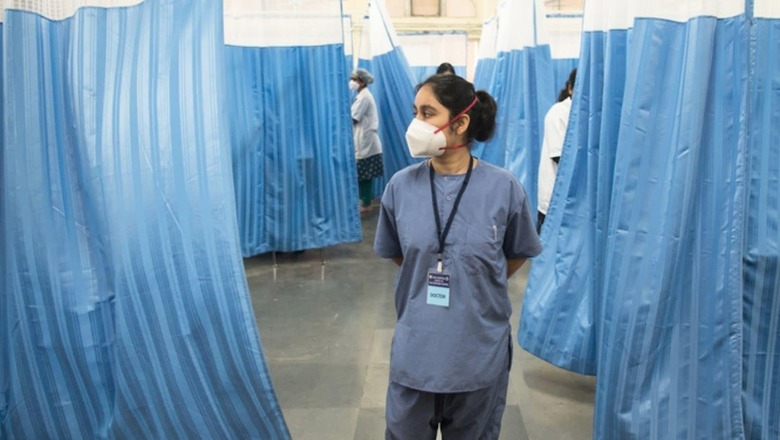Health Ministry to Frame Guidelines for Monkeypox, Advises Isolation in Designated Health Facilities

views
The Health Ministry, in collaboration with the Indian Council of Medical Research (ICMR) and the National Centre for Disease Control (NCDC), is framing comprehensive guidelines for the treatment and prevention of monkeypox.
In the interim advisory to all states and union territories recently, the ministry said that health facilities should keep heightened suspicion on people who “present with an otherwise unexplained rash and who have travelled, in the last 21 days, to a country that has recently had confirmed or suspected cases of monkeypox or report contact with a person or people with confirmed or suspected monkeypox.”
Monkeypox is a zoonotic disease caused by the monkeypox virus. It can spread from animals to humans; and also between people. The symptoms include fever, intense headache, muscle aches, back pain, low energy, swollen lymph nodes and a skin rash or lesions.
According to World Health Organisation, the rash usually begins within one to three days of the onset of fever. Lesions can be flat or slightly raised, filled with clear or yellowish fluid, and can then crust, dry up and fall off.
The Centre has directed states to report all suspected cases to the District Surveillance Officer of the Integrated Disease Surveillance Programme.
The advisory recommends sending laboratory samples consisting of fluid from vesicles, blood, sputum, etc. to the NIV in Pune for monkeypox testing in case of suspicion. In case a positive case is detected, contact tracing has to be initiated immediately to identify the contacts of the patient in the last 21 days, the advisory stated.
According to the advisory, monkeypox can be transmitted from animal to humans as well as human to human. The virus enters the body through broken skin (even if not visible), respiratory tract, or the mucous membranes (eyes, nose, or mouth). Human-to-human transmission is thought to occur primarily through large respiratory droplets generally requiring a prolonged close contact.
It can also be transmitted through direct contact with body fluids or lesion material, and indirect contact with lesion material, such as through contaminated clothing or linens of an infected person.
WHO’s senior epidemiologist Maria Van Kerkhove, in an online briefing on Thursday (May 26), said cases have so far been detected in more than 20 non-endemic countries, adding that the agency expected the numbers to go up.
“We expect more cases to be detected. We are asking countries to increase surveillance…This is a containable situation. It will be difficult, but it’s a containable situation in the non-endemic countries.”
Read all the Latest India News here




















Comments
0 comment